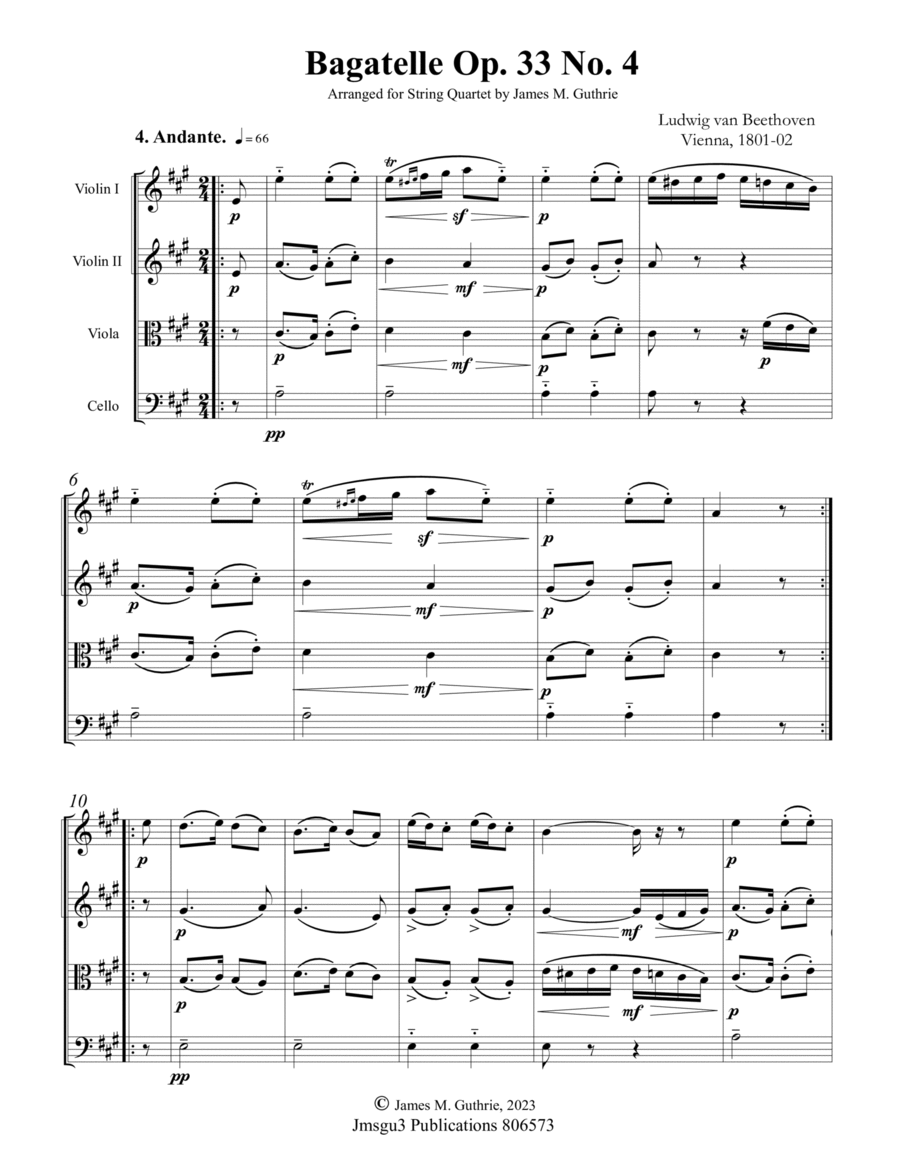String Quartet Cello,String Quartet,Viola,Violin - Level 3 - Digital Download SKU: A0.1208462 Composed by Ludwig van Beethoven (1770 â 1827). Arranged by James M. Guthrie, ASCAP. 19th Century,Chamber,Classical,Contest,Festival,Wedding. 10 pages. Jmsgu3 #806573. Published by jmsgu3 (A0.1208462). 4. Andante.Beethoven's Bagatelles Op. 33 are pretty typical of his early style, retaining many compositional features of the early Classical period. Â The first bagatelle is arguably one of Beethoven's most well-known pieces. While they may seem light-hearted and not to be taken too seriously, they are still well-crafted works that embody the younger Beethoven's style. The Bagatelles Op. 33 were composed by Beethoven in 1801-02 and published in 1803. Bagatelles are shorter and less complex than sonatas, often consisting of a single movement. They were intended to be played as light entertainment or as encores at the end of a concert.The Bagatelle No. 4 of Op. 33 by Beethoven is a sentimental Andante set in ternary form. The piece is cast in the key of A major. The first section of the piece is characterized by a simple tuneful melody that is repeated throughout the section. The second section is in the parallel homotonic minor key of A minor and features a more dramatic and intensely brooding harmonic sequence with no actual melody. Itâs like a thunderstorm threatening to upset a picnic, but no real damage was done. The third section brings us back to our optimistic A major environment and develops the melody through artful variation. The piece ends with a brief codetta featuring octave displacement. Overall, the piece is an excellent example of Beethoven's ability to create a memorable melody, and a contrasting harmonic sequence, and develop these in a short amount of time.
